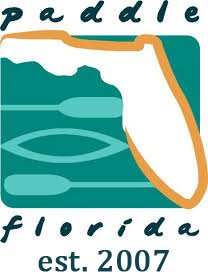Florida Springs Council Writes a Better Plan for the Santa Fe River
By Ryan Smart
We’ve all heard the saying, “If you want something done right, do it yourself.” When it comes to creating a Better Basin Management Action Plan (BMAP) for the Santa Fe River, that’s exactly what the Florida Springs Council did.
The purpose of a BMAP is to reduce water pollution levels back down to the point where we don’t have algae blooms and mass manatee die-offs, or get sick from going into the creeks in our backyards. For Outstanding Florida Springs, like Ichetucknee, Poe, Silver, and Rainbow the law requires these plans to achieve water quality goals within twenty years.
In 2018, the Florida Department of Environmental Protection (DEP) proposed BMAPs for twenty-four impaired Outstanding Florida Springs. Several of these, including the BMAP for springs of the Santa Fe River, fell woefully short of that basic statutory goal.
The most obvious failing in the Santa Fe BMAP is that it only proposes a small fraction of the nitrate reductions necessary to clean up the springs. At the same time, it ignores the increased pollution that will inevitably occur in the next twenty years from population growth and greater agricultural intensity. At best, DEP’s BMAP is a prescription for treading water. At worst, our springs will be more polluted in twenty years than they are today.
In response, a handful of Florida environmental groups and several brave individuals challenged the legitimacy of five Outstanding Florida Springs BMAPs in court. We expect a ruling from the First District Court of Appeals on those cases soon.
During this long legal process, the Florida Springs Council concluded that, since the State was shirking its responsibility to create a credible BMAP, we would do it ourselves. The result is a Better BMAP for the Santa Fe River Springs available at FloridaSpringsCouncil.org/betterbmap.
What makes a small non-profit think it can write a better BMAP than a state agency with a multi-billion annual budget?
We have the great advantage of caring not a whit about political considerations but only the health of the springs. Unlike DEP, we’re honest about the scope of the problem and the seriousness of the measures that will have to be undertaken to reverse decades of manmade degradation.
Everyone agrees that we must reduce nitrate pollution in the Santa Fe River Basin by approximately two-thirds, or 1.8 million pounds per year. That’s no small task. DEP’s BMAP only gets us about a quarter of the way there. So what will it take to restore the Santa Fe?
First, we have to stop making the problem worse. That means requiring all new residential and commercial developments to connect to advanced wastewater treatment facilities, prohibiting in-ground lawn irrigation systems and the use of lawn fertilizer containing nitrogen on new lots, and placing a moratorium on new agricultural water use permits.
Then we have to deal with the existing pollution by allocating the required nitrate reductions to specific categories of pollution sources (farm fertilizer, septic tanks, urban fertilizer, etc.), and finding policies and projects capable of achieving those reductions.
In the case of the Santa Fe River, and many other Florida waters, agriculture is the major source of pollution and, therefore, must be responsible for the vast majority of the reductions. While urban fertilizer and septic tank pollution are real issues that must be addressed, even if they were eliminated the springs of the Santa Fe River would still not meet water quality goals.
The challenge is showing how agricultural pollution can be cut by approximately seventy percent in a State where farmers have the legal right to pollute our waters. It will involve more advanced agricultural practices, like precision fertilizer placement and soil-moisture sensors, but more importantly it will require large-scale conversions of intensive agriculture to non-polluting land uses like forestry. These initiatives will require legislation creating a new type of groundwater and nutrient conservation easement and ongoing ecosystem payments for farmers willing to convert their lands, as well as hundreds of millions of dollars in funding annually from the State to implement.
Our “Better BMAP” is intended to show the people of Florida, as well as our elected and appointed leaders, that springs restoration, though difficult, is achievable. In the end, we can only hope that they will take our recommendations seriously. If not, they should have the decency to admit that, although recovering our springs is a worthy and achievable goal, they don’t have the political will to make it happen.
You can read the entire Better BMAP report, watch a replay of our recent webinar, and support FSC’s unique policy work to protect springs at FloridaSpringsCouncil.org/betterbmap.
“Better BMAP for the Santa Fe River Springs” was funded in part by a grant from the nonporift Fish & Wildlife Foundation of Florida via proceeds from the ‘Protect Florida Springs’ license plate.
